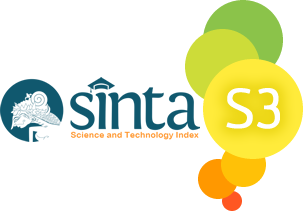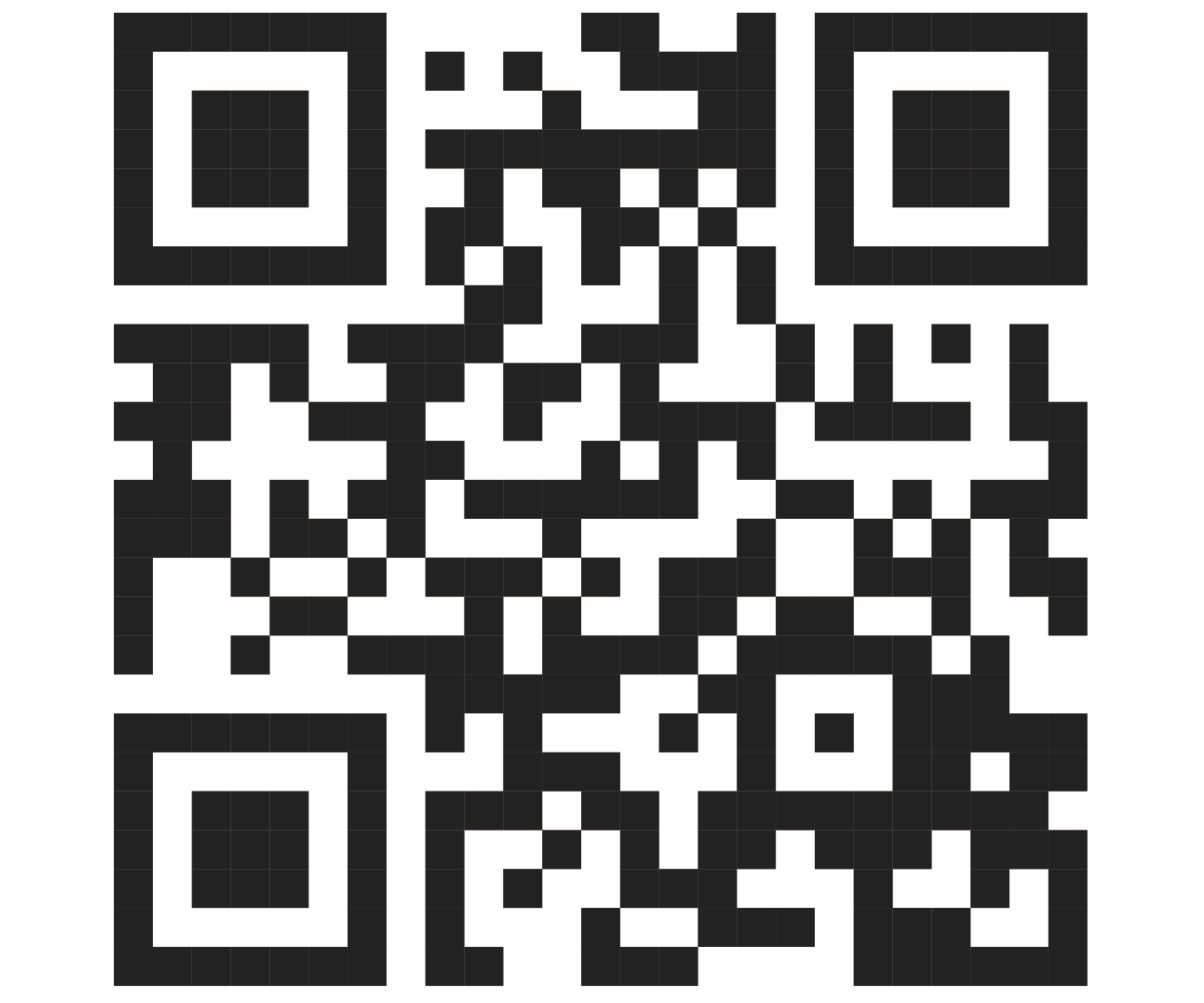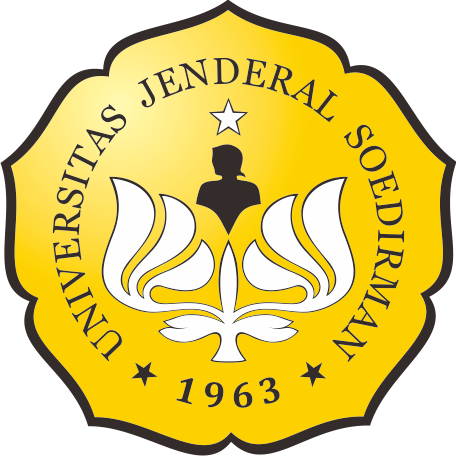PENGARUH FOTOPERIODIK KANIBALISME MATERNAL PADA MENCIT LABORATORIUM (Mus musculus)
Abstrak
The animal has an ability to respond to environmental changes with an adaptive mechanism to optimize reproductive fitness. Using house mice Mus musculus (laboratory mice) as the subject, we examined the responsiveness to different photoperiod which hints at seasonal change. The animal can accurately predict the seasonal change by physiological anticipation then expressed in their behavior. Cannibalism is one of crucial maternal behavior that helps the population to control its size particularly to survive in significant environmental change. To confirm the significance of photoperiod-induced change in mice maternal cannibalism, which further changed sex ratio and mass regulation, we placed the mice in different photoperiod: 12h:12h (light:dark; control), 14h:10h (long day), and 10h:14h (short day) as first factor and duration of treatment prior to mating (0 day, 20 days and 40 days) as second factor (n = 5 / group). The results showed that photoperiod has a significant effect (p < 0,05) to the sex ratio of each litter on PND1 (postnatal day 1) and PND20, while litter size was affected only on PND20. Litter size and sex ratio changes were mainly caused by maternal-specific cannibalism as we observed during 20 days postpartum. PND20 gave significant effect to the pups mass (p < 0,05). Maternal and pups mass might associate with maternal investment during lactation, and also related to litter size and sex ratio adjustment via specific maternal cannibalism.
Key Words: photoperiodism, maternal cannibalism, sex ratio, Mus musculusKata Kunci
Referensi
Ai S, Shimmura T, Nishiwaki-Ohkawa T, Yoshimura T. 2014. Regulation of seasonal reproduction by hypothalamic activation of thyroid hormone. Frontiers in Endocrinology, 5 (12): 1-7.
Ashkenazy T, Einat H, Kronfeld-Schor N. 2009. We are in the dark here: induction of depression-like and anxiety-like behaviours in the diurnal fat sand rat, by short daylihght or melatonin injections. International Journal of Neuropsychopharmacology, 12: 83-93.
Bartness TJ, Wade GN. 1985. Photoperiodic Control of Seasonal Body Weight Cycles in Hamsters. Neuroscience & Biobehavioral Reviews, 9: 599-612.
Bartness TJ, Demas GE, Song CK. 2002. Seasonal changes in adiposity: the roles of the photoperiod, melatonin and other hormones, and sympathetic nervous system. Experimental Biology and Medicine, 227: 363-376.
Beery AK, Zucker I. 2012. Sex Ratio Adjustment by Sex-specific Maternal Cannibalism in Hamsters. Physiology and Behavior, 107: 271–276.
Bourgeois F, Alexiu A, Lemonnier D. 1983. Dietary-induced obesity: Effect of dietary fats on adipose tissue cellularity in mice. British Journal of Nutrition, 49: 17-26.
Burn CC, Mason GJ. 2008. Effects of cage-cleaning frequency on laboratory rat reproduction, cannibalism, and welfare. Applied Animal Behaviour Science, 114: 235–247.
Champagne FA, Meaney MJ. 2006. Stress During Gestation Alters Postpartum Maternal Care and the Development of the Offspring in a Rodent Model. Biological Psychiatry Journal, 59:1227–1235.
Concannon P, Levac K, Rawson R, Tennant B, Benadoun A. 2001. Seasonal changes in serum leptin, food intake, and body weight in photoentrained woodchucks. American Journal of Physiology, 281: 951-959.
Coomans CP, Berg SAAvd, Lucassen EA, Houben T, Pronk ACM, Spek RDvd, Kalsbeek A, Biermasz NR, Dijk KWv, Romijn JA, and Meijer JH. 2013. The suprachiasmatic nucleus controls circadian energy metabolism and hepatic insulin sensitivity. Diabetes, 62(4): 1102–1108.
Deacon RMJ. 2006. Housing, Husbandry, and Handling of Rodents for Behavioral Experiments. Nature Protocol, 1 (2): 936-946. Department of Primary Industries. 2004. Code of Practice for the Housing and Care of Laboratory Mice, Rats, Guinea Pigs and Rabbits. Victorian Government Department of Primary Industries. Melbourne, Australia.
Dijk, D-J, Archer SN. 2009. Light, Sleep, and Circadian Rhythms: Together Again. Plos Biology, 7 (6): 1-4.
Elwood RW. 1991. Ethical implications of studies on infanticide and maternal aggression in rodents. Animal Behaviour, 42: 841–849.
Fuchs S. 1981. Consequences of premature weaning on the reproduction of mothers and offspring in laboratory mice. Z. Tierpsychol. 55: 19-32.
Gandelman R, Zarrow MX, Denenberg VH. 1971. Stimulus Control of Cannibalism and Maternal Behavior in Anosmic Mice. Physiology and Behavior, 7: 583-586.
Gilbert AN. 1986. Mammary number and litter size in Rodentia: The "one-half rule". Proceeding National Academy of Science, USA, 83: 4828-4830.
Gorman MR, Ferkin MH, Dark J. 1994. Melatonin Influences Sex-Specific Prenatal Mortality in Meadow Voles. Biology of Reproduction, 51: 873-878.
Haldar C, Yadav R. 2006. Melatonin, Gestation and Fetal Development. Journal of Endocrinology and Reproduction, 1: 1-12.
Heideman PD, Bierl CK, Galvez ME. 2000. Inhibition of Reproductive Maturation and Somatic Growth of Fischer 344 Rats by Photoperiods Shorter than L14:D10 and by Gradually Decreasing Photoperiod. Biology of Reproduction, 63: 1525–1530.
Klingenspor M, Niggemann H, Heldmaier G. 2000. Modulation of leptin sensitivity by short photoperiod acclimation in the Djungarian hamster, Phodopus sungorus. Journal of Comparation Physiology, 170: 37–43.
Konig B, Riester J, Markl H. 1988. Maternal Care in House Mice (Mus musculus): 11. The Energy Cost of Lactation as a Function of Litter Size. J. Zooi., London, 216: 195-210.
Kooijman S, Berga Rvd, Ramkisoensingc A, Boona MR, Kuipersa EN, Loefa M., Zonnevelda TCM, Lucassenc EA, Sipsa HCM, Chatzispyroud IA, Houtkooperd RH, Meijerc JH, Coomansc CP, Biermasza NR, Rensen PCN. 2015. Prolonged daily light exposure increases body fat mass through attenuation of brown adipose tissue activity. PNAS, 112 (21): 6748–6753.
Kotenkova EV, Maltzev AN. 2012. The Role of Invasions in Evolution of Commensal Taxa of Mus musculus Sensu Lato Species Group. Российский Журнал Биологических Инвазий, 2: 129-134.
Labov JB, Huck UW, Vaswani P, Lisk RD. 1985. Sex ratio manipulation and decreased growth of male offspring of undernourished golden hamsters (Mesocricetus auratus). Behavioral Ecology and Sociobiology, 18: 241-249.
Lu Q, Zhong WQ, Wang DH. 2007. Effects of photoperiod history on body mass and energy metabolism in Brandt’s voles (Lasiopodomys brandtii). The Journal of Experimental Biology, 210: 3838-3847.
McElroy JF, Wade GN. 1985. Short Photoperiod Stimulates Brown Adipose Tissue Growth and Thermogenesis but not Norepinephrine Turnover in Syrian Hamsters. Physiology & Behavior, 37: 307-311.
Mercer JG, Moar KM, Ross AW, Hoggard N, Morgan PJ. 2000. Photoperiod regulates arcuate nucleus POMC AGRP and leptin receptor mRNA in Siberian hamster hypothalamus. Animal Journal of Physiology, 278:271–281.
Mitchell JC, Walls SC. 2008. Cannibalism. Encyclopedia of Ecology, 6: 513-517.
Moore CL. 1985. Sex differences in urinary odors produced by young laboratory rats (Rattus norvegicus). Journal of Comparative Psychology, 99: 336-341.
Morse HC. 2007. Building a better mouse: One hundred years of genetics and biology. In: Fox JG, Barthold SW, Davisson MT,
Newcomer CE, Quimby FW, Smith SL, editors. The mouse in biomedical research second edition. San Diego, CA: Academic Press. p. 1–11.
Nelson RJ. 1990. Photoperiodic Responsiveness in House Mice. Physiology and Behavior, 48: 403—408.
Nelson RJ. 2004. Seasonal immune function and sickness responses. Trends in Immunology, 25: 187–192.
Nováková M, Vašáková B, Kutalová H, Galeštoková K, Průšová K, Šmilauer P, Šumbera R, Frynta D. 2010. Secondary sex ratios do not support maternal manipulation: extensive data from laboratory colonies of spiny mice (Muridae: Acomys). Behavioral Ecology Sociobiology, 64: 371–379.
Ono H, Hoshino Y, Yasuo S, Watanabe M, Nakane Y, Murai A, Ebihara S, Korf HW, Yoshimura T. 2008. Involvement of thyrotropin in photoperiodic signal transduction in mice. PNAS, 105 (47): 18238-18242.
Phifer-Rixey M, Nachman MW. 2015. The Natural History of Model Organisms: Insights into mammalian biology from the wild house mouse Mus musculus. eLife, 4: 1-13.
Prendergast BJ, NelsonRJ. 2005. Affective responses to changes in day length in Siberian hamsters (Phodopus sungorus). Psychoneuroendocrinology, 30: 438–452.
Prendergast BJ, Kay LM. 2008. Affective and adrenocorticotrophic response to photoperiod in wistar rats. Journal of Neuroendocrinology, 20: 261–267.
Richter HG, Torres-Farfán C, Rojas-García PP, Campino C, Torrealba F, Serón-Ferré M. 2004. The Circadian Timing System: Making Sense of day/night Gene Expression. Biology Research, 37: 11-28.
Ross AW, Johnson CE, Bell LM, Reilly L, Duncan JS, Barrett P. 2009. Divergent regulation of hypothalamic neuropeptide Y and agouti-related protein by photoperiod in F344 rats with differential food intake and growth. Journal of Neuroendocrinol, 21: 610–619.
Ross AW, Russell L, Helfer G, Thomson LM, Dalby MJ, Morgan PJ. 2015. Morgan. Photoperiod regulates lean mass accretion, but not adiposity, in growing F344 rats fed a high fat diet. Plos One, DOI: 10.1371/journal.pone.0119763.
Sahin L, Wood BM, Plitnick B, Figueiro MG. 2014. Daytime light exposure: Effects on biomarkers, measures of alertness, and performance. Behavioural Brain Research, 274: 176–185.
Schneider JE, Wade GN. 1989. Effects of Maternal Diet, Body Weight and Body Composition on Infanticide in Syrian Hamsters. Physiology & Behavior, 46: 815-821.
Trivers RL, Willard DE. 1973. Natural Selection of Parental Ability to Vary the Sex Ratio of Offspring. Science, 179 (4068): 90-92.
Victorian Government Department of Primary Industries. 2004. Code of Practice for the Housing and Care of Laboratory Mice, Rats, Guinea Pigs and Rabbits. Victorian Government Department of Primary Industries. Melbourne, Australia.
Wade GN, Jennings G, Trayhurn P. 1986. Energy balance and brown adipose tissue thermogenesis during pregnancy in Syrian hamsters. American Journal of Physiology, 250 (5): 845-850.
Wahlsten D. 2011. Mouse Behavioral Testing: How to Use Mice in Behavioral Neuroscience. Academic Press. London.
Walton JC, Weil ZM, Nelson RJ. 2011. Influence of photoperiod on hormones, behavior, and immune function. Frontiers in Neuroendocrinology, 32(3):303-319.
Weber EM, Olsson IAS. 2008. Maternal Behavior in Mus musculus sp.: an Ethological Review. Applied Animal Behavior Science, 114: 1-22.
West SA, Sheldon BC. 2002. Constraints in the Evolution of Sex Ratio Adjustment. Science, 295: 1685-1688.
Article Reads
Total: 1169 Abstrak: 1007Refbacks

This work is licensed under a Creative Commons Attribution-ShareAlike 4.0 International License.
This website is maintained by:
Bio Publisher
The Faculty of Biology Publishing
Laman ini dikelola oleh:
Penerbitan Fakultas Biologi
Universitas Jenderal Soedirman
Jalan dr. Suparno 63 Grendeng
Purwokerto 53122
Telepon: +62-281-625865
Email: biologi@unsoed.ac.id
Laman ini menggunakan:
OJS | Open Journal System
Software pengelolaan jurnal ilmiah online. Versi yang digunakan adalah 2.4.8.0.
Metadata artikel terdaftar di:
Crossref
Agen resmi internasional pendaftaran Digital Object Identifier (DOI)
Artikel jurnal ini terindeks:








